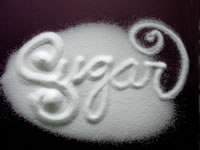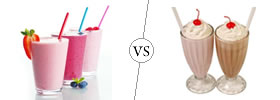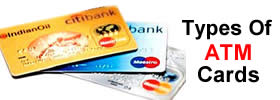Difference between Castor Sugar and Icing Sugar
Key difference: Sugar is the generalized name for sweet-flavored food substances. Castor sugar is also known as caster sugar, superfine sugar, ultrafine sugar or bar sugar. It is a type of granulated sugar that has superfine granulated crystals, usually 0.35 mm. Icing sugar is a super fine sugar, finer than even castor sugar. It is often termed as 10X sugar, confectioner's sugar or powdered sugar.
 Sugar is the generalized name for sweet-flavored food substances. Sugars are categorized as carbohydrates, which are a group of compounds made up of carbon, hydrogen and oxygen. Carbohydrates, and in turn sugars, are the source of chemical energy for living organisms, including humans. Sugars are categorized as monosaccharide, disaccharides and polysaccharides. Monosaccharides are the simplest carbohydrate type, composed of a single molecule. These include glucose, galactose, and fructose. Disaccharides are made up of two molecules. The table sugar, also known as sucrose, most commonly used by humans, is a type of disaccharide. Other disaccharides include maltose and lactose.
Sugar is the generalized name for sweet-flavored food substances. Sugars are categorized as carbohydrates, which are a group of compounds made up of carbon, hydrogen and oxygen. Carbohydrates, and in turn sugars, are the source of chemical energy for living organisms, including humans. Sugars are categorized as monosaccharide, disaccharides and polysaccharides. Monosaccharides are the simplest carbohydrate type, composed of a single molecule. These include glucose, galactose, and fructose. Disaccharides are made up of two molecules. The table sugar, also known as sucrose, most commonly used by humans, is a type of disaccharide. Other disaccharides include maltose and lactose.
Sucrose, table sugar, is mainly extracted from either sugarcane or sugar beet. Sugar became a popular sweetener in the 18th century, after sugar plantations were set up in the West Indies and Americas. However, sugar was being produced as far back as the ancient times in India, and subsequently in China. After the 18th century, sugar was very popular, but rare, and it could only be afforded by the wealthy. Hence, sugar was often called “white gold.”
Sugar is processed through a long process. First the juice is extracted, and then purified with lime and heat. Then it is further processed, and it eventually separates into sugar crystals and molasses. The sugar crystals are bleached and refined to give the end product, which we buy at the supermarket. This is the traditional white sugar.
Sugar, is available in many forms in the market. Some of the forms of sugar available are granulated white sugar or table sugar, superfine (castor or caster) sugar, coarse (decorators or pearl) sugar, crystal sugar, confectioners, powdered or icing sugar, invert sugar, brown sugar, raw sugar, Demerara sugar, Muscovada or Barbados sugar, Turbinado sugar, etc.
Each one has its specific uses especially for cooking and baking. The type of sugar used is extremely important, especially in baking. This is true, as the size of the sugar crystal affects the amount of air that can be incorporated into the baking batter, especially during the creaming of the sugar and fat or butter. The size of the crystal will also affect how quickly the sugar will dissolve in the batter. All these factor effect the look, consistency and taste of the finished baking product.
Castor sugar is also known as caster sugar, superfine sugar, ultrafine sugar or bar sugar. It is a type of granulated sugar that has superfine granulated crystals, usually 0.35 mm. The term castor or caster sugar is mainly used in UK English and its Commonwealth countries. In North America, it is sold as super fine sugar. In Canada, specifically in British Columbia, it is termed as berry sugar. The term ‘castor’ refers to a form of sieve called castor, as the grains of the sugar are fine enough to fit through the said sieve.
The super fine size of the sugar crystals allow the sugar to dissolve almost instantly. It is often used to sweeten cold beverages, such as iced tea, lemonade and other drinks, which is why it is also often termed as bar sugar.
.jpg) In baking, it is commonly used to make meringue and frosting. Some cake or cookie recipes do call for castor sugar, however, most use granulated sugar, as granulated sugar allows more air to be incorporated in to the batter, which results in a softer and fluffier cake. In order to substitute for castor sugar, one can simply run the granulated sugar through a food processor for a couple of minutes until the granules have reduced in size.
In baking, it is commonly used to make meringue and frosting. Some cake or cookie recipes do call for castor sugar, however, most use granulated sugar, as granulated sugar allows more air to be incorporated in to the batter, which results in a softer and fluffier cake. In order to substitute for castor sugar, one can simply run the granulated sugar through a food processor for a couple of minutes until the granules have reduced in size.
Icing sugar is a super fine sugar, finer than even castor sugar. It is often termed as 10X sugar, confectioner's sugar or powdered sugar. The size of the sugar crystal varies 10X sugar is usually 0.010 mm, while confectioner's sugar is 0.060 mm, and icing sugar is 0.024 mm. The term 10X refers to sugar that has been processed ten times. In addition to sugar, most commercially sold icing sugar has an anti-caking agent to prevent clumping of the sugar. This is usually 1% to 3% either cornstarch or tri-calcium phosphate.
To get the fine granulation of the icing sugar, the sugar is ground in a steel magnesium rotary which turns against varying degrees of fine screens. Each of these screens determines a different fineness of the grind. The coarser granulation of the initial sugar, the more even will be the final grind.
Icing sugar is often used to make icings, frostings, confections, sweet pastry, meringues, whipping cream or for dusting a final touch on cakes, waffles or pastries. This is mainly due to the fact the anti-caking agent in the sugar prevent it from crystallizing.
One can also make an adequate substitute for icing sugar at home, by running regular sugar in a food processor until it has turned into a fine powder. In order to make it exactly like the store brought product, i.e. with the anti-caking properties, add 1 teaspoon of cornstarch to 1 cup of powdered sugar.
Image Courtesy: romania-insider.com, food2die.blogspot.com









Add new comment